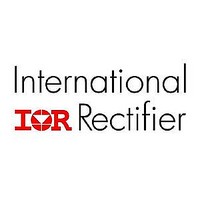iru3065 International Rectifier Corp., iru3065 Datasheet - Page 4

iru3065
Manufacturer Part Number
iru3065
Description
Positive To Negative Dc To Dc Controller
Manufacturer
International Rectifier Corp.
Datasheet
1.IRU3065.pdf
(15 pages)
Available stocks
Company
Part Number
Manufacturer
Quantity
Price
Part Number:
iru3065CLTRPBF
Manufacturer:
IR
Quantity:
20 000
IRU3065(PbF)
APPLICATION INFORMATION
Introduction
The IRU3065 is a controller intended for an inverting
regulator solution. For example, to generate –5V from
a 5V supply. The controller is simple and only has a
voltage comparator, current hysteretic comparator, flip-
flop and MOSFET driver. It controls a typical buck boost
converter configured by a P-channel MOSFET, an in-
ductor, a diode and an output capacitor. The sensed
inductor current by a sensing resistor compares with
current comparator. The current comparator uses hys-
teresis to control the turn-on and turn-off of the transis-
tor based upon the inductor current and gated by the
output voltage level. When the inductor current rises
past the hysteresis set point, the output of the current
comparator goes high. The flip-flop is reset and the P-
channel MOSFET is turned off. In the mean time, the
current sense reference is reduced to near zero, giving
a zero reference threshold voltage level. As the induc-
tor current passes below this threshold, which indicates
that the inductor’s stored energy has been transferred
to the output capacitor, the current comparator output
goes high and turns on the output transistor (if the out-
put voltage is low). By means of hysteresis, the induc-
tor charges and discharges and functions as self oscil-
lating. The voltage feedback comparator acts as a de-
mand governor to maintain the output voltage at the de-
sired level.
By hysteresis control, the maximum switch current (also
equals inductor current) is limited by the internal cur-
rent sensing reference. The power limit is automatically
achieved. The switching frequency is determined by a
combination of factors including the inductance, output
load current level and peak inductor current. The theo-
retical output voltage and switching frequency versus
output current is shown in Figure 3.
4
Figure 3 - Theoretical output voltage and switching
Switching
frequency
f
s
Output
voltage
V
out
frequency vs. output current.
Regulation
mode
f
s
max
I
ocp
Power limit
mode
I
out
I
out
www.irf.com
When the output current is below a critical current I
the output voltage is regulated at the desired value and
the switching frequency increases as output current
increases. At current I
reaches its maximum f
tion is in regulation mode. When the current goes above
I
put voltage starts to decrease and the output power is
limited. The switching frequency is also reduced.
Analysis shows that the current I
The maximum switching frequency is determined by:
I
The detailed operation can be seen in the theoretical
operation section
OCP
PEAK
, the operation goes into power limit mode. The out-
I
f
f
I
Where:
Rs = Current Sensing Resistance
VI
comparator (when Vcc=5V, VI
V
V
V
Where:
I
OCP
S(MAX)
S(MAX)
PEAK
PEAK
is determined by:
IN
D
OUT(NOM)
SEN(TH)
= Diode Forward Voltage
= Input Voltage
=
=
= Peak Inductor Current
=
=
VI
1
2
(V
VI
= Upper Threshold Voltage at the current
SEN(TH)
= Nominal Output Voltage
R
IN
SEN(TH)
S
+V
VI
V
V
IN
SEN(TH)
IN
Rs
D
-V
(V
(V
OUT(NOM
(V
S(MAX)
D
D
OCP
-V
IN
---(3)
-V
+V
V
OUT(NOM)
, the switching frequency
OUT(NOM)
. In this region, the opera-
IN
) L I
D
-V
-V
OUT(NOM)
OUT(NOM)
OCP
V
) R
)
IN
SEN(TH)
PEAK
is determined by:
S
+V
) L
=0.145V)
D
--(1)
---(2)
OCP
,












